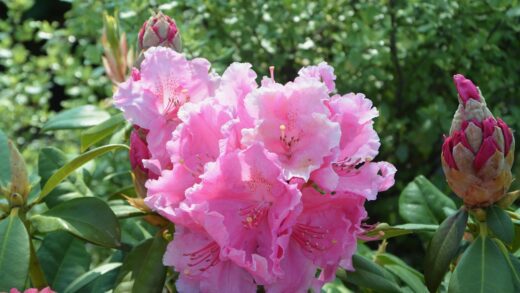Providing gladiolus with the appropriate nutrients through a well-planned fertilization strategy is fundamental to achieving vigorous growth and a profusion of spectacular blooms. Like all plants, gladioli require a balanced diet of essential macronutrients and micronutrients to carry out their life processes. Proper fertilization supports the development of strong corms, robust foliage, sturdy stems, and vibrant, large flowers. However, both the under-application and over-application of fertilizers can be detrimental, making it crucial to understand what nutrients are needed, in what quantities, and at which stages of the plant’s growth cycle. A sound approach to feeding will ensure these magnificent flowers reach their full potential.
The primary macronutrients required by gladiolus are nitrogen (N), phosphorus (P), and potassium (K). Each of these plays a distinct and vital role in the plant’s development. Nitrogen is crucial for vegetative growth, promoting the development of lush, green leaves. Phosphorus is essential for strong root development and is particularly important for the process of flower formation. Potassium contributes to the overall vigor and health of the plant, strengthening its resistance to diseases and environmental stresses, and playing a key role in the transfer of energy and the development of large, healthy corms.
The ideal fertilizer for gladiolus is one that provides a balanced supply of these nutrients. A common mistake is to apply a fertilizer that is excessively high in nitrogen. While this will produce abundant leafy growth, it often does so at the expense of the flowers, and can also result in weak, soft stems that are unable to support the flower spikes. Therefore, fertilizers with a lower ratio of nitrogen relative to phosphorus and potassium are generally preferred. Formulations such as 5-10-10 or 5-10-5 are often recommended, as they provide adequate nitrogen for foliage development while supplying the higher levels of phosphorus and potassium needed for flowers and corm health.
The timing of fertilizer application is just as important as the type of fertilizer used. Nutrients should be made available to the plant when it needs them most. The first application can be made at the time of planting, by incorporating a granular, slow-release fertilizer into the soil. Subsequent applications are beneficial during the active growing season, particularly when the plants are developing their flower spikes. By tailoring the fertilization schedule to the plant’s growth stages, gardeners can ensure that the necessary nutrients are available at these critical junctures, maximizing the plant’s performance.
Understanding essential nutrients
A deeper understanding of the essential nutrients is key to formulating an effective fertilization program for gladiolus. Beyond the “big three” macronutrients (N, P, K), plants also require secondary macronutrients—calcium (Ca), magnesium (Mg), and sulfur (S)—and a host of micronutrients, such as iron (Fe), manganese (Mn), and boron (B), albeit in much smaller quantities. A healthy, fertile soil rich in organic matter will typically supply most of these secondary and micronutrients, but deficiencies can still occur, leading to specific symptoms.
More articles on this topic
Nitrogen is a component of chlorophyll, the molecule that allows plants to photosynthesize, and is a building block for proteins and enzymes. A nitrogen deficiency will manifest as a general yellowing (chlorosis) of the older, lower leaves, as the plant moves this mobile nutrient to its new growth. The plant’s growth will also be stunted. Conversely, an excess of nitrogen leads to overly lush, dark green foliage, delayed flowering, and weak stems, making the plant more susceptible to lodging (bending over) and certain diseases.
Phosphorus is often called the “energy” nutrient, as it is a component of ATP (adenosine triphosphate), the molecule that transports energy within the plant. It is vital for root growth, seed formation, and, most importantly for gladiolus, flower production. A phosphorus deficiency can be difficult to diagnose visually but may result in stunted growth and a purplish discoloration of the leaves. Most critically, a lack of phosphorus will lead to poor or non-existent flowering. This is why fertilizers for flowering plants are often higher in this element.
Potassium is a “regulator” nutrient, involved in over 60 different enzyme systems within the plant. It regulates the opening and closing of stomata (the pores in the leaves), which controls water loss, making it crucial for drought tolerance. It also strengthens cell walls, which helps the plant resist diseases and pests, and supports the development of strong stems. A potassium deficiency often appears as a yellowing or browning along the margins of the older leaves. It is also essential for the proper formation and storage of energy in the corm, which directly impacts the plant’s ability to survive dormancy and thrive the following year.
Choosing the right fertilizer
Selecting the appropriate fertilizer from the vast array of available products can seem daunting, but the choice can be simplified by focusing on the specific needs of gladiolus. The key is to look at the N-P-K ratio, which is displayed as three numbers on the fertilizer packaging. These numbers represent the percentage by weight of nitrogen, phosphorus (as phosphate, P2O5), and potassium (as potash, K2O), respectively. For gladiolus, a fertilizer where the second and third numbers are equal to or greater than the first is generally the best choice.
More articles on this topic
Granular, slow-release fertilizers are an excellent option for the initial application at planting time. These fertilizers are designed to release their nutrients gradually over a period of weeks or months, providing a steady supply of food to the plant as it establishes itself. A balanced granular fertilizer like a 10-10-10 can be used, or a formulation specifically designed for bulbs and flowering plants, such as a 5-10-10, can be incorporated into the bottom of the planting trench. This ensures that the nutrients are placed in the root zone where they are needed most.
Liquid or water-soluble fertilizers are another valuable tool, particularly for supplemental feeding during the growing season. These fertilizers are mixed with water and applied to the base of the plants, providing a quick boost of nutrients that are immediately available for uptake by the roots. A liquid feed with a high-phosphorus “bloom booster” formulation can be particularly beneficial when the plants are beginning to form their flower spikes. This targeted application can enhance the size, color, and number of blooms.
Organic fertilizers are also an excellent choice for feeding gladiolus and for improving overall soil health. Compost and well-rotted manure provide a slow release of a wide range of nutrients and also improve soil structure and microbial activity. Bone meal is a fantastic organic source of phosphorus and calcium, making it an ideal amendment to mix into the soil at planting time to promote strong root and flower development. Similarly, wood ash can be used sparingly to supply potassium, although care should be taken as it can also raise the soil pH.
A schedule for fertilization
A well-structured fertilization schedule ensures that gladiolus plants receive the right nutrients at the optimal times to support their growth stages. A proactive feeding plan is far more effective than trying to correct nutrient deficiencies after they have already appeared. The schedule should encompass pre-planting preparation, feeding during active growth, and consideration for post-blooming nutrition.
The first application of fertilizer should occur before or at the time of planting. As the soil is being prepared, a balanced granular fertilizer (e.g., 5-10-10 or 10-10-10) or an organic amendment like bone meal can be incorporated. The fertilizer should be mixed into the soil at the bottom of the planting hole or trench, and then covered with a thin layer of unfertilized soil before placing the corm on top. This prevents the corm from coming into direct contact with the concentrated fertilizer, which could cause it to burn. This initial charge provides the essential nutrients for early root and shoot development.
The second key time for fertilization is when the plants have reached a height of about 25 to 30 centimeters and are showing several well-developed leaves. At this stage, the plant is entering a phase of rapid growth. A side-dressing of granular fertilizer can be applied. This involves sprinkling the fertilizer on the soil surface in a ring around the base of the plant, keeping it a few centimeters away from the stem, and then gently working it into the top layer of soil. Following the application with a thorough watering will help to move the nutrients down into the root zone.
A third application is beneficial just as the flower spikes begin to emerge from the foliage. This is a period of high energy demand, and providing additional nutrients can significantly improve the quality of the blooms. For this feeding, a liquid fertilizer with a higher phosphorus and potassium content (a “bloom booster” formula) is ideal, as it provides readily available nutrients. This final feeding supports the development of large, vibrant flowers and also helps the plant begin the process of storing energy in the new corm for the following season. After this point, it is generally not necessary to fertilize further during the current growing season.
Organic vs. synthetic fertilizers
When choosing how to feed gladiolus, gardeners have the option of using either organic or synthetic fertilizers. Both types can be effective, but they work in different ways and have different impacts on the soil and the plant. Understanding the distinctions between them can help a gardener make an informed choice that aligns with their gardening philosophy and goals. The decision is not necessarily about which is better, but which is more appropriate for a given situation.
Synthetic fertilizers are manufactured chemical compounds that contain concentrated and readily available nutrients. They are typically fast-acting, and their precise nutrient content is clearly stated on the label, which allows for very targeted feeding. For example, a water-soluble 10-30-20 fertilizer provides a quick and precise dose of nutrients that can rapidly correct a deficiency or provide a boost during a critical growth stage. However, synthetic fertilizers do little to improve the long-term health of the soil, and their overuse can lead to a buildup of salts and harm beneficial soil microorganisms. There is also a greater risk of over-fertilizing and “burning” the plants with these concentrated products.
Organic fertilizers are derived from natural sources, such as plant matter (compost, alfalfa meal), animal products (manure, bone meal, fish emulsion), and mined minerals. These fertilizers release their nutrients more slowly, as they must be broken down by soil microbes before they become available to the plants. This slow-release nature makes them less likely to burn plants and provides a steady, gentle feeding over a longer period. A major advantage of organic fertilizers is that they also feed the soil itself, improving its structure, water-holding capacity, and fostering a healthy ecosystem of beneficial organisms.
A highly effective approach is often to use an integrated strategy that combines the benefits of both types. The long-term health of the soil can be built by regularly incorporating organic matter like compost and manure. This creates a fertile, resilient foundation for the plants. Then, synthetic fertilizers can be used judiciously for targeted supplemental feedings, such as providing a quick-acting liquid bloom booster fertilizer just as the flower spikes are developing. This hybrid approach leverages the soil-building benefits of organic methods with the precision and fast action of synthetic products, providing comprehensive nutrition for the gladiolus.


















